Introduction
Navigating the complex world of Autism Spectrum Disorder (ASD) can be a daunting task for many parents and caregivers. With its diverse range of symptoms and behaviors, ASD presents unique challenges that affect social communication, daily functioning, and overall well-being. Understanding the core characteristics of ASD, from social communication difficulties to restricted and repetitive behaviors, is essential for early diagnosis and intervention.
This not only improves outcomes for children but also equips parents with the necessary tools to support their child's development.
Research underscores the importance of tailored interventions, highlighting that each child with ASD is unique and requires a personalized approach to meet their specific needs. Sensory sensitivities and executive function impairments further complicate daily life, making it crucial for parents to advocate for appropriate educational placements and resources. The rise in ASD diagnoses emphasizes the need for greater awareness and standardized screening tools to ensure early identification and support.
This article provides a comprehensive overview of the core characteristics of ASD, the social communication challenges faced by individuals with autism, and the importance of early and effective interventions. It also delves into the restricted and repetitive behaviors characteristic of ASD, sensory sensitivities, and the diagnostic criteria for evaluating the disorder. By exploring these aspects, the article aims to empower parents and caregivers with the knowledge and resources needed to navigate the complexities of autism and enhance the quality of life for their children.
Core Characteristics of ASD
Autism Spectrum Disorder (ASD) is a multifaceted neurodevelopmental condition, presenting a broad range of symptoms and behaviors. Core characteristics typically include challenges with social communication, difficulties in interpreting social cues, and a variety of restricted and repetitive behaviors. These traits manifest uniquely in each individual, which is why autism is referred to as a 'spectrum.' This variability indicates that some individuals may be highly verbal while others may have limited speech, and some may exhibit intense focus on specific interests.
According to the Diagnostic and Statistical Manual of Mental Disorders (DSM-5), the criteria for diagnosing ASD require that these core features be present in early childhood, although symptoms might not fully manifest until social demands exceed the individual's capacity to cope. Early diagnosis is crucial, as interventions can significantly improve outcomes. Statistics indicate that children identified with the condition by age 4 are fifty times more likely to receive necessary services, emphasizing the importance of early identification and support.
Studies reveal that the prevalence of ASD is around 1 in 100 people globally, making it a significant public health concern. The condition is often accompanied by comorbidities such as depression, stress, and anxiety, which can persist throughout life. Researchers continue to explore the intricate mechanisms behind ASD, with some studies focusing on the role of genetic factors and others investigating the potential of technological aids, such as AI, in early diagnosis.
The variety in how this condition manifests makes it essential for customized treatment plans. Applied Behavior Analysis (ABA) and other behavioral interventions have shown promising results in enhancing communication and adaptive behaviors. With ongoing research and advancements in understanding ASD, there is hope for more effective support and better quality of life for individuals with autism.
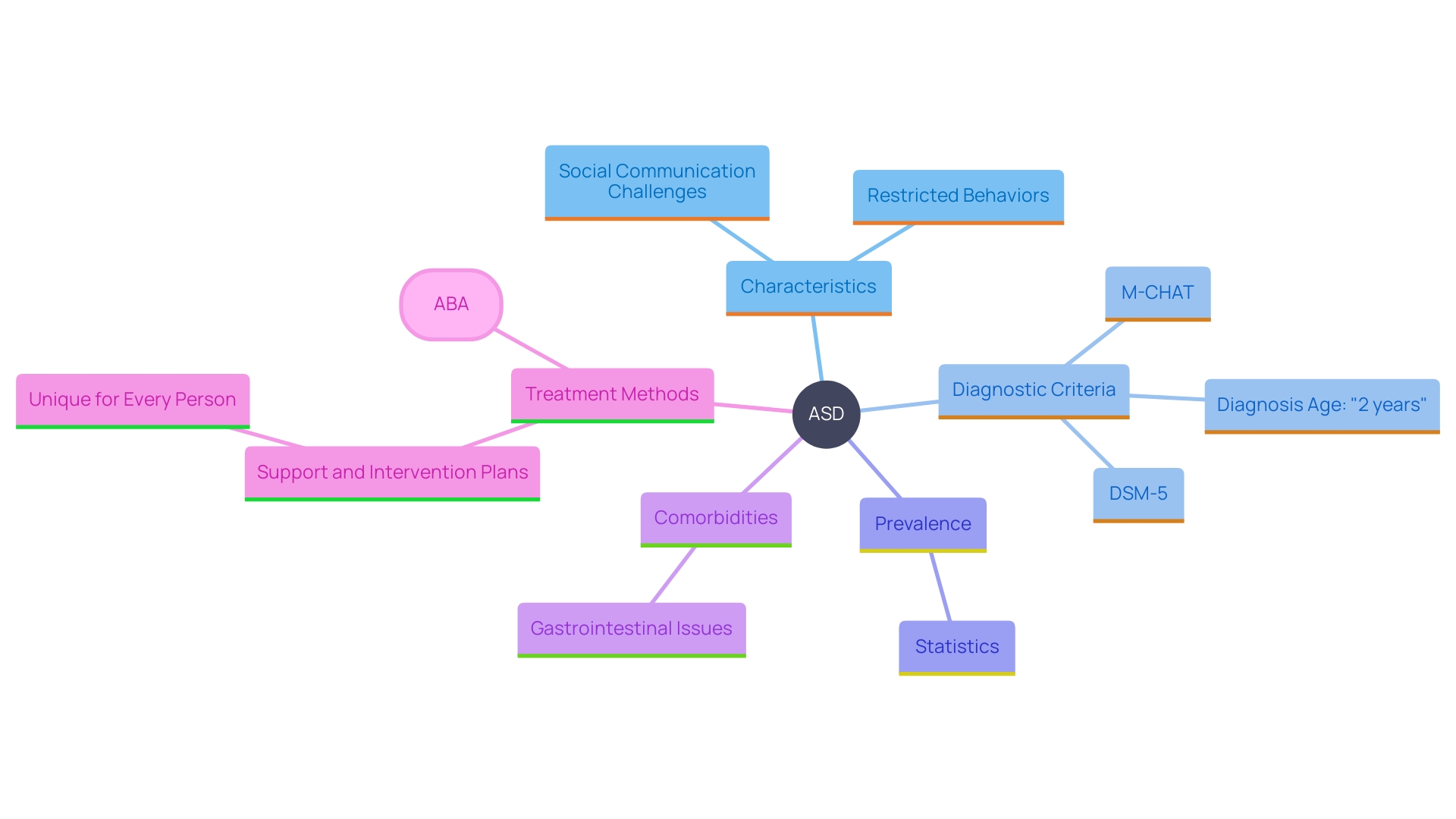
Social Communication Challenges
Individuals with Autism Spectrum Disorder (ASD) often encounter significant difficulties in interpersonal communication. These difficulties can manifest in various ways, including struggles with initiating and maintaining conversations, deciphering non-verbal cues like facial expressions and body language, and understanding the nuances of interpersonal interactions. The capacity to interpret changes in speech patterns, such as variations in pitch, rhythm, and tone, is particularly challenging. As highlighted by research from the University of Rochester, this may be due to the brain's difficulty in processing and adapting to these changes, making verbal communication even more complex.
These interpersonal communication hurdles significantly impact the ability to form and sustain relationships with peers and adults. For example, interpreting the phrase “I can’t believe it” can be confusing, as its meaning changes with different intonations—expressing either surprise or sarcasm. This complexity in communication can make social situations feel daunting and confusing for individuals with ASD, often leading to feelings of isolation and misunderstanding.
Moreover, the broader system often fails to support these individuals adequately. A study involving mothers on the spectrum revealed that while they found the system problematic, they also felt judged and stigmatized for their condition, underscoring the need for better training and support services. This training should be strength-based, developed, and conducted by autistic adults to foster a more positive understanding of autism.
The importance of early and effective interventions cannot be overstated. Evidence indicates that developmental interventions can improve interpersonal communication abilities, especially when applied early in a young person's life. Pediatricians and healthcare providers play a crucial role in directing families to these interventions, which can significantly improve long-term outcomes for autistic children. However, the types and intensity of these interventions can vary widely, and it is essential for healthcare providers to be well-versed in the most effective options to offer the best support.
Comprehending these challenges and putting supportive measures into action are crucial steps toward assisting individuals with ASD maneuver through their interpersonal environments more effectively.
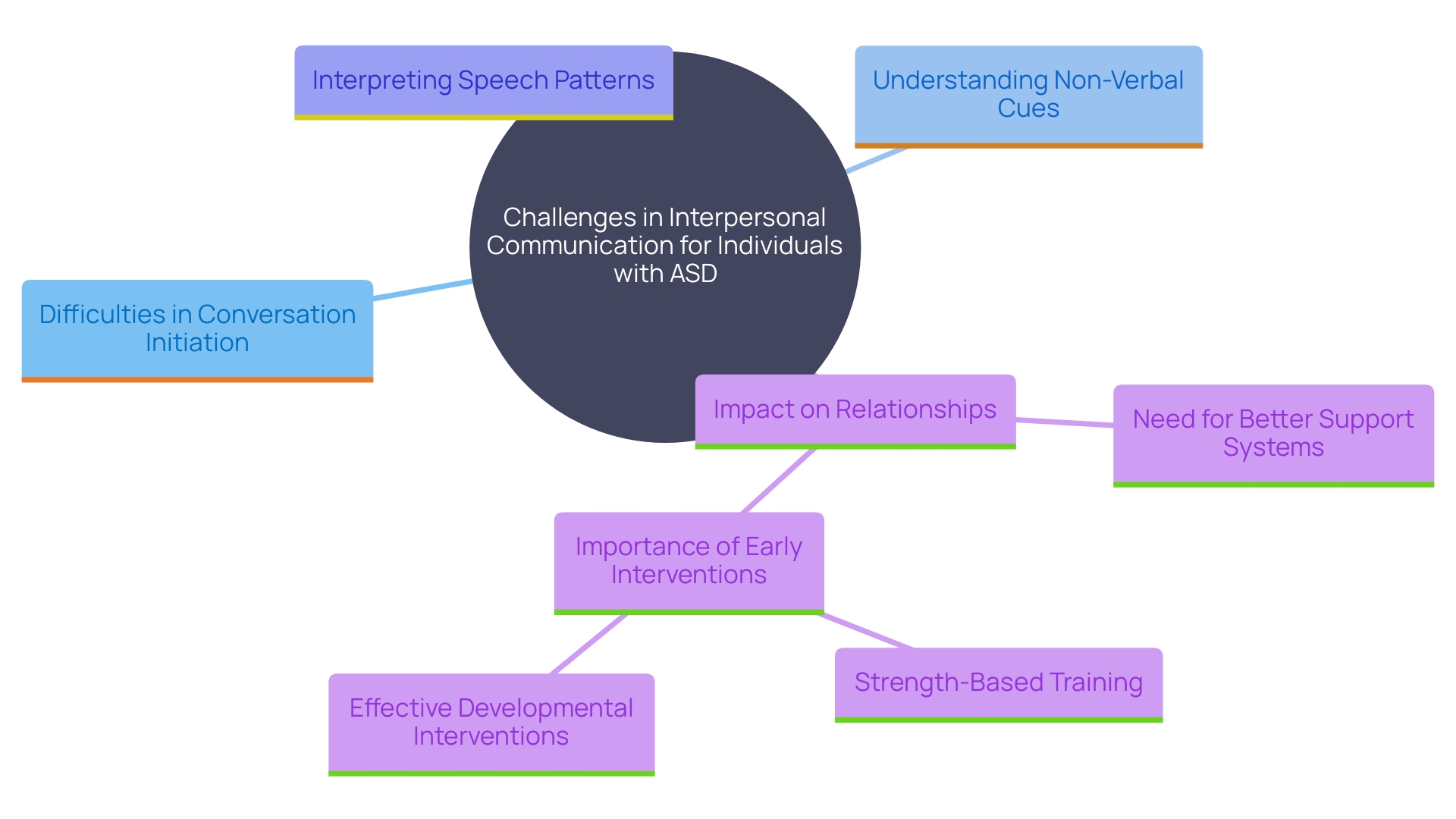
Restricted and Repetitive Behaviors
Children on the spectrum often exhibit limited and repetitive behaviors, a core characteristic of Spectrum Disorder as defined by the DSM-5 criteria. These behaviors might include repetitive movements such as hand-flapping or rocking, and a strong insistence on sameness, manifesting as a preference for routines or specific rituals. These actions can provide comfort and predictability for individuals with ASD, helping them manage their environment in a way that feels safe and structured. However, these behaviors can also pose challenges, interfering with daily activities and social interactions.
Comprehending these behaviors is essential for early intervention, as this condition generally manifests by age 3, although signs can be noticed even sooner. Diagnosing this condition accurately requires professional observation to assess communication, behavioral, and developmental levels. Addressing these behaviors through appropriate support systems and interventions can significantly enhance the quality of life for children on the spectrum. Early intervention not only aids in better managing these behaviors but also helps in enhancing social and communication skills, ultimately promoting more inclusive social participation and reducing long-term challenges.
Sensory Sensitivities and Executive Function Impairments
Sensory sensitivities are a hallmark of the disorder, affecting up to 90% of individuals diagnosed with the condition. This heightened sensitivity often involves an exaggerated response to sounds, lights, textures, or tastes, making everyday environments overwhelming. According to recent studies, this hypersensitivity can be attributed to the 'noisy' brain state in autistic individuals, where sensory information processing is less reliable. This variability in sensory response leads to marked differences in perception and reaction, impacting daily experiences significantly.
Furthermore, numerous individuals with spectrum disorder (ASD) encounter difficulties with executive function, which encompasses challenges in planning, organizing, and managing time. These impairments can severely affect academic performance and daily living skills. For instance, it has been observed that altered sensory perception not only disrupts situational predictions based on prior experiences but also exacerbates the core symptoms of this condition, demonstrating the interconnected nature of sensory and executive function challenges.
Research underscores the importance of understanding these sensory experiences from the perspectives of autistic children and young people themselves, rather than through the lens of parents or professionals. Such insights are crucial for developing targeted interventions that can better support individuals with developmental differences in navigating their sensory and executive function challenges.
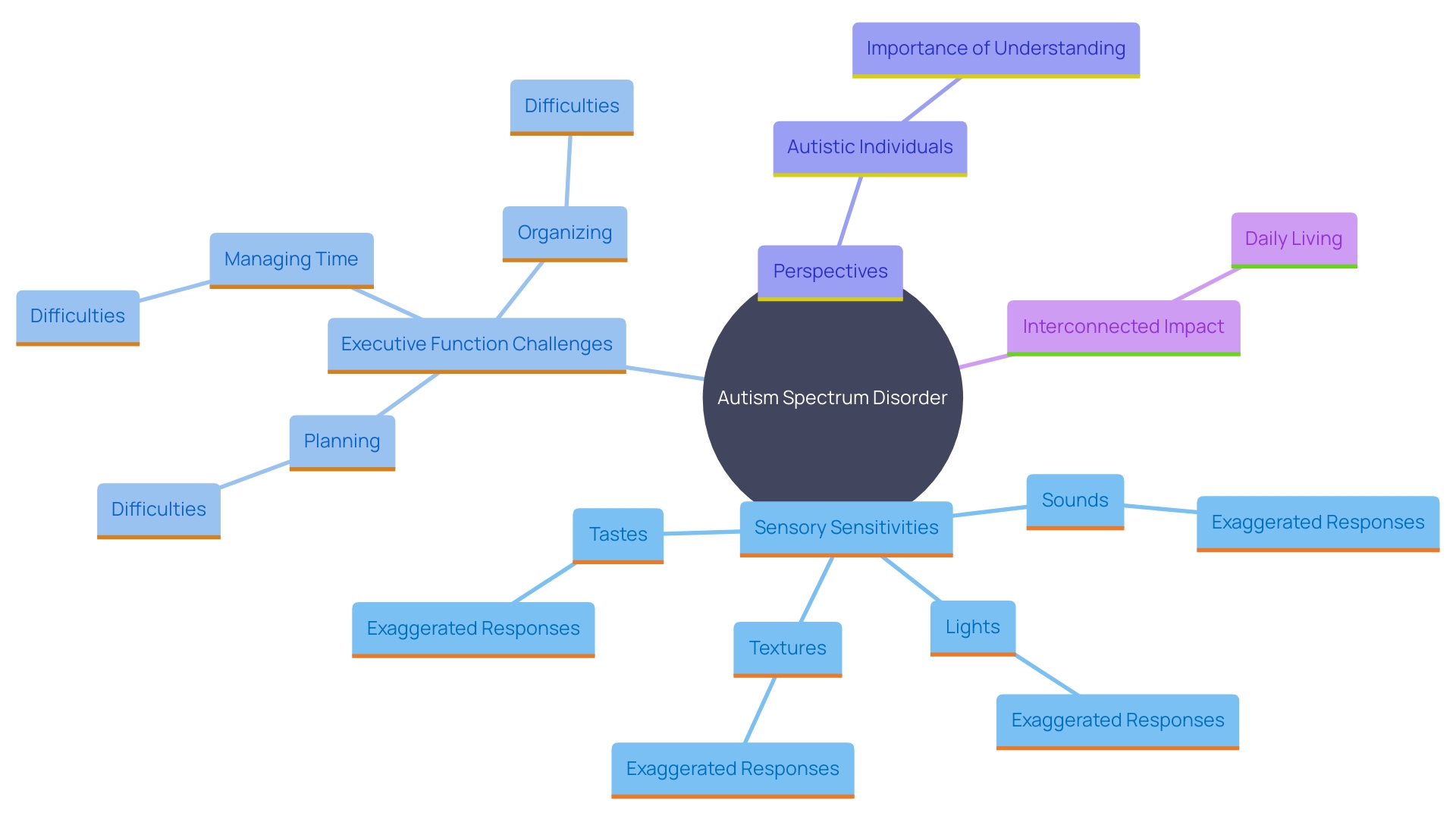
Diagnostic Criteria and Evaluation
Diagnosing Autism Spectrum Disorder (ASD) relies heavily on the criteria outlined in the Diagnostic and Statistical Manual of Mental Disorders, Fifth Edition (DSM-5). This manual provides standardized guidelines to help clinicians identify the core features of autism, which typically manifest in early childhood but may become more apparent as social demands increase. A comprehensive evaluation for ASD includes gathering detailed developmental histories from parents or caregivers and observing the individual's behavior. These evaluations often involve a team of specialists, including psychologists, speech therapists, and pediatricians, to ensure a thorough assessment.
Timely diagnosis and intervention are crucial for the growth of individuals with ASD. Research consistently shows that the sooner treatment begins, the better the outcomes for the child. Behavioral therapies, which can begin as soon as a few weeks after birth, have been demonstrated to enhance social communication and other fundamental challenges linked to the condition. According to the Centers for Disease Control and Prevention (CDC), developmental screenings focused on autism should be conducted during regular health visits at 18 and 24 months, allowing for early identification and support.
The rise in ASD diagnoses, from one in 150 to one in 36 over the past 20 years, underscores the importance of early and accurate diagnosis. This increase is attributed to greater awareness, the use of standardized screening tools, and efforts to educate caregivers and providers about developmental milestones. Consequently, early intervention programs and resources are essential for supporting the development and well-being of youth with ASD.
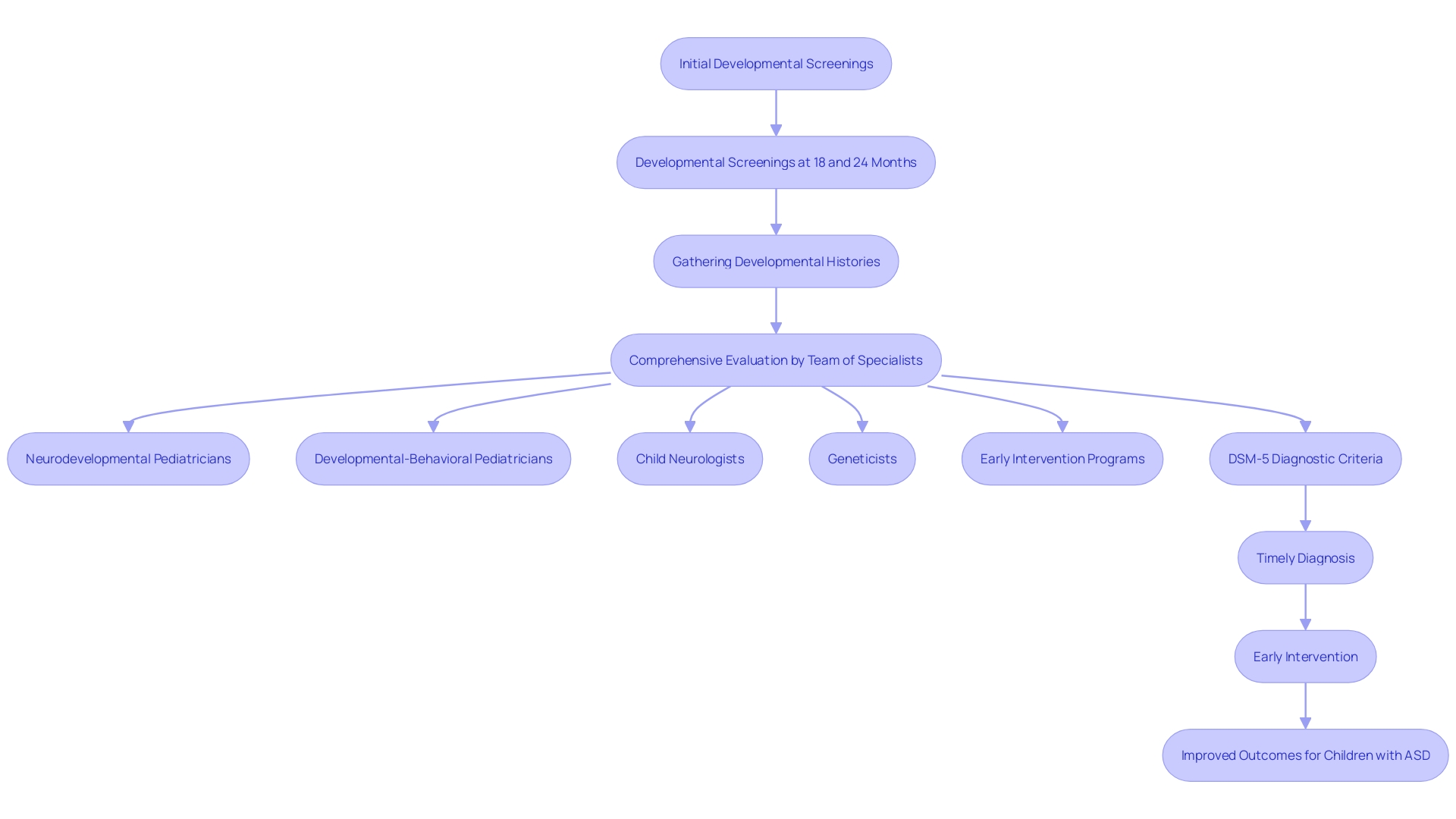
Variability in ASD Symptoms and Severity
Autism Spectrum Disorder (ASD) presents a wide range of symptoms and severity levels, making each individual's experience unique. For instance, while some young individuals may need extensive support throughout their lives, others might develop significant independence. This variability can be observed in studies such as the one carried out at Victoria University of Wellington, where individuals with differing levels of autism symptoms were recruited to assess the effectiveness of low-intensity support programs. The results indicated that youngsters receiving only 2–3 hours of parent and clinician-delivered support weekly exhibited greater engagement and used a broader range of language compared to those in the control group. Additionally, parents in the low-intensity group were better equipped with strategies to support their offspring's interactions.
Research highlights the significance of customized interventions, as individuals with ASD frequently encounter simultaneous challenges such as anxiety, hyperactivity, and mood difficulties. These challenges require customized support plans that tackle both their developmental needs and environmental factors, such as family dynamics and community contexts. For example, auditory hypersensitivity, a common issue among individuals with ASD, can significantly impact their quality of life by making everyday environments like schools and public places overwhelming.
Comprehending these varied requirements and the possible advantages of early intervention can assist in establishing nurturing settings that encourage the growth of individuals with ASD. As highlighted by specialists, early childhood interventions, including naturalistic developmental behavioral strategies, are essential in fostering communication skills and reducing core challenges linked to autism. The goal is to ensure that each young individual receives the necessary support to thrive, emphasizing the importance of a personalized approach tailored to their unique experiences and needs.
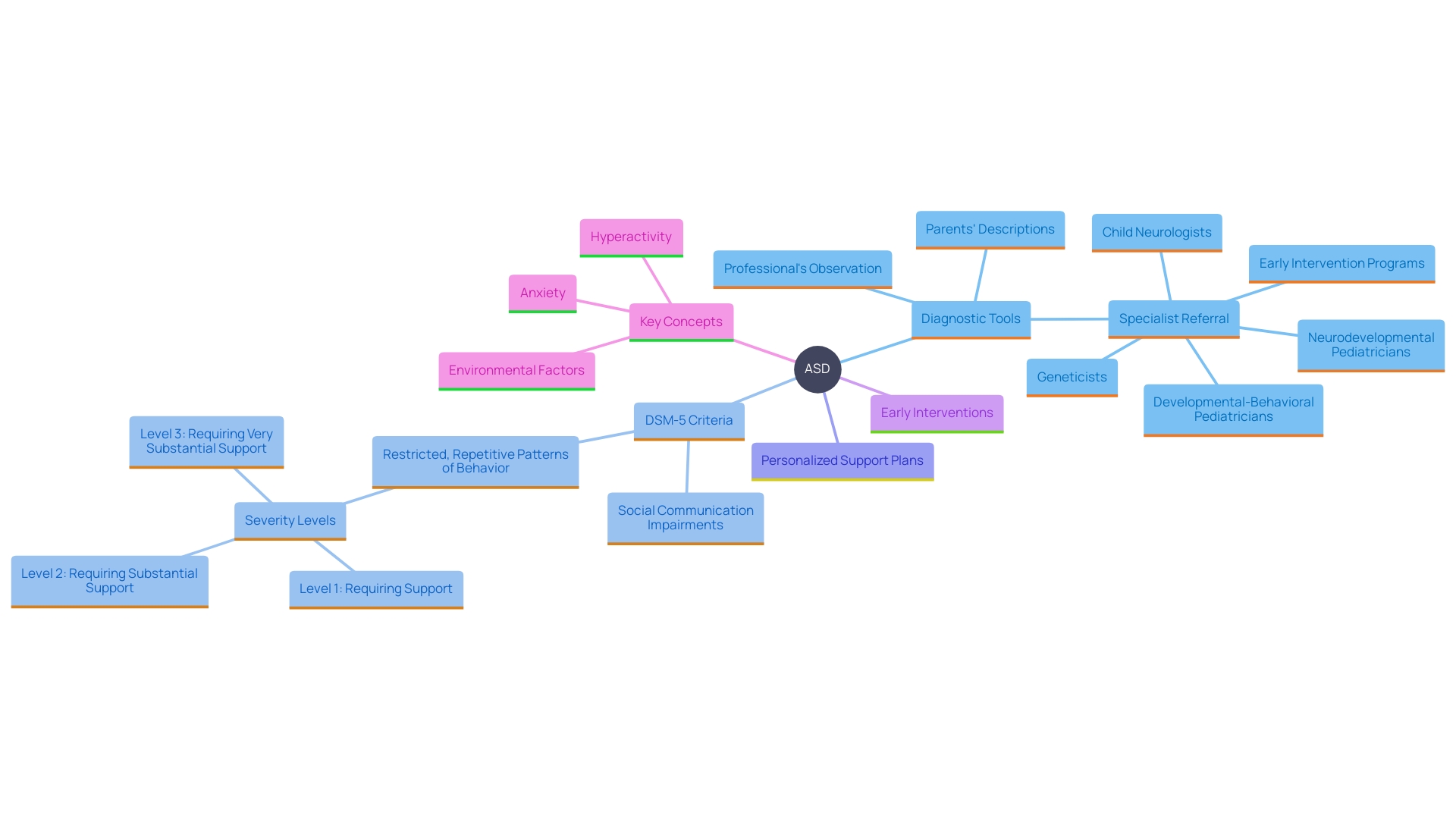
Impact on Daily Life and Functioning
Autism Spectrum Disorder (ASD) significantly impacts daily life, presenting challenges in social interactions, communication, and sensory processing. These difficulties often impact a young person's ability to participate in school, engage in play, and navigate community settings. Research indicates that parents of youth with ASD often face considerable challenges in obtaining suitable educational placements and accessing essential care services. These challenges are worsened by high demand and limited resources, often requiring parents to advocate persistently for their offspring's needs.
A study supported by the Community Foundation for Northern Ireland highlights that many parents face delays in obtaining diagnoses, which are crucial for securing school placements and additional services. Furthermore, findings from the UC Davis MIND Institute reveal that autistic youth in underserved neighborhoods are more likely to exhibit greater ADHD symptoms, emphasizing the need for equitable resource distribution.
Parents and caregivers play a pivotal role in advocating for their offspring. As noted by Valerie Gaus, PhD, autistic individuals face unique challenges in navigating transitions, from school to independence and employment. These transitions are compounded by sensory issues and difficulties with neurotypical social norms. Parents often bear the brunt of these challenges, dedicating significant time and energy to ensure their child's well-being, sometimes at the expense of their own personal or professional lives.
To address these issues, experts like Micheal Sandbank, PhD, stress the importance of developing and evaluating non pharmaceutical interventions in early childhood. Such interventions aim to provide developmentally appropriate support and empower families. Ultimately, a combination of persistent advocacy, improved resources, and tailored interventions can help mitigate the profound impact of ASD on daily life.
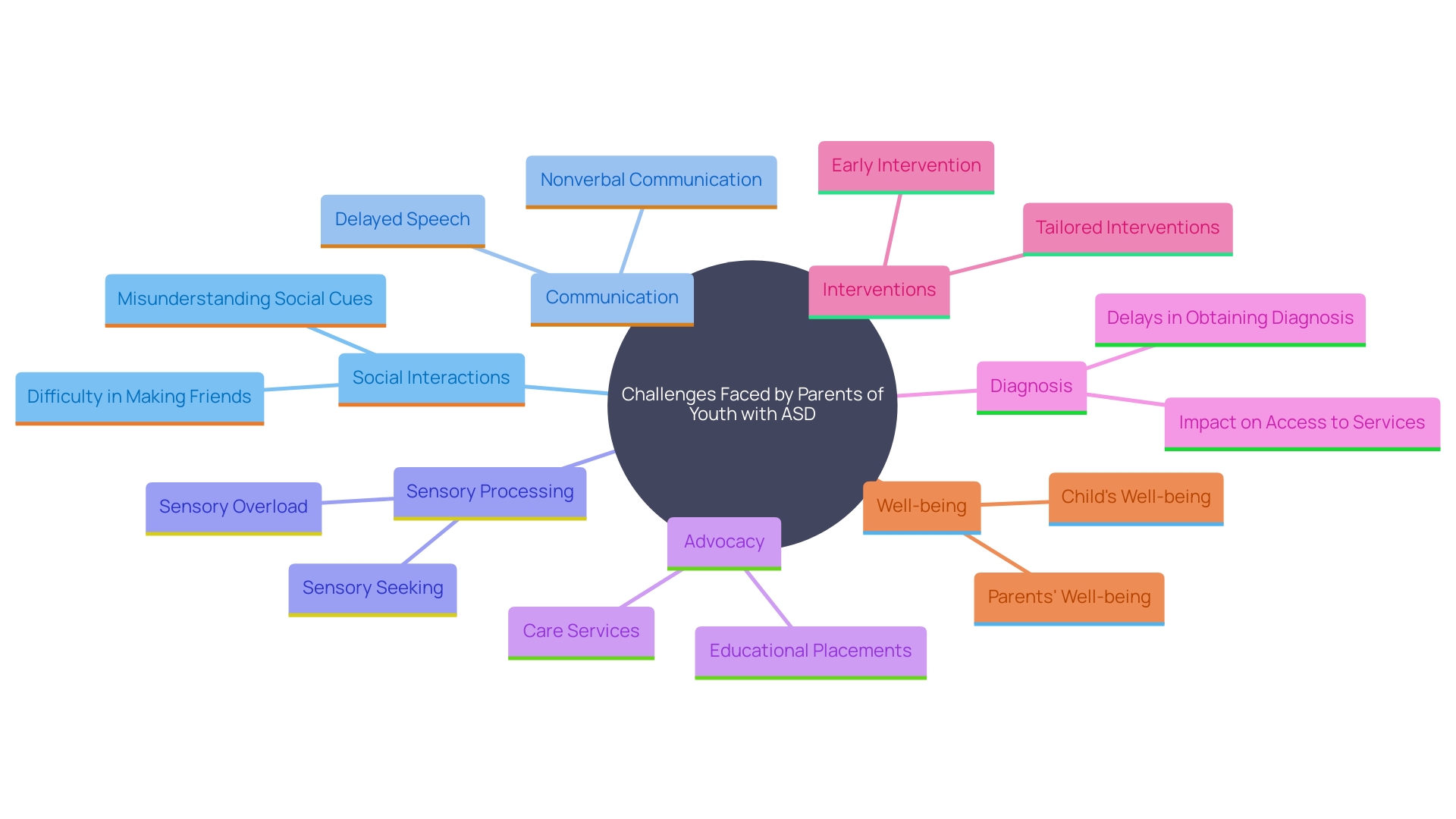
Conclusion
Understanding Autism Spectrum Disorder (ASD) is essential for parents and caregivers navigating its complexities. The core characteristics of ASD, including social communication challenges, restricted and repetitive behaviors, and sensory sensitivities, require a nuanced approach to support. Early diagnosis plays a pivotal role in ensuring that children receive the interventions they need, significantly improving their long-term outcomes.
Social communication difficulties can lead to isolation and misunderstanding, highlighting the necessity for effective interventions that enhance these skills from an early age. Recognizing the unique ways in which individuals with ASD express their needs and emotions fosters a more inclusive environment. Additionally, understanding restricted and repetitive behaviors is vital, as these can both provide comfort and present challenges in social contexts.
Tailored support systems can help children manage these behaviors effectively.
Sensory sensitivities and executive function impairments further complicate daily life for individuals with ASD. Awareness of these challenges allows for the development of targeted interventions that can significantly improve the quality of life. The variability in symptoms and severity emphasizes the importance of personalized strategies designed to meet each child's unique needs.
Ultimately, the journey for children with ASD is one that requires advocacy, understanding, and tailored support. By equipping parents and caregivers with the necessary knowledge and resources, it becomes possible to create a more supportive environment that empowers children with autism to thrive. Early and effective interventions, along with a commitment to advocacy, can pave the way for improved outcomes and a brighter future for individuals on the spectrum.




